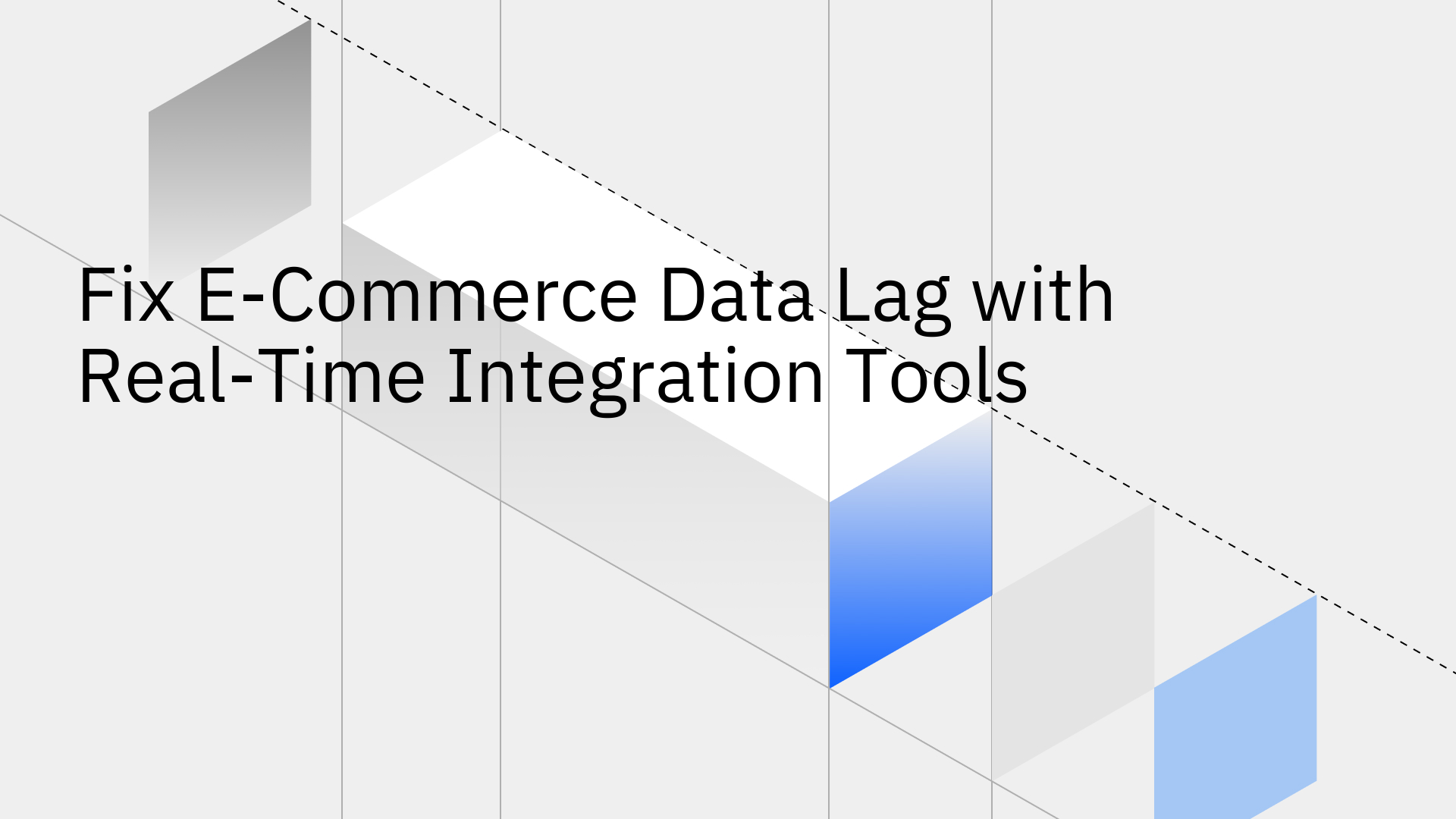
In the fast-paced world of e-commerce, data lag is a costly problem. This is the delay between when data is generated, like a customer placing an order and when that information becomes available across all your business systems. Even minor delays can lead to significant issues, including lost sales, poor customer experiences, and operational chaos.
To stay competitive, modern businesses need a solution: real-time data integration for the e-commerce industry. The right tools not only eliminate these frustrating delays but also unlock new opportunities for growth.
Data lag creates a disconnect between the different parts of your e-commerce operation. Your website, warehouse, and marketing teams could all be working with slightly different, outdated information. This leads to specific, tangible consequences for online retailers.
Real-time integration is the process of instantly and automatically syncing data between two or more systems the moment a change occurs [6]. Instead of sending information in batches on a schedule, data flows continuously, keeping everything perfectly aligned.
This approach is fundamentally different from traditional batch processing (often called ETL), which runs on a schedule—for example, updating data only once an hour or once a day. This scheduled approach inherently creates data lag. By the time the data is moved, it may already be too old to be useful for making timely business decisions [4].
True real-time integration also requires a bidirectional, or "two-way," sync. This means that if data changes in any connected system, all other systems are updated immediately. This ensures everyone is working from a single source of truth. With this method, real-time data sync is simplified for modern teams, allowing them to operate with confidence.
Adopting a real-time data strategy offers direct benefits that solve the core problems caused by data lag.
Integration creates a single, consistent source of truth for all your customer, order, and product data across platforms like Shopify, HubSpot, and NetSuite. Having unified data is essential for managing multiple sales channels and making informed decisions with confidence [7].
Real-time sync automates crucial workflows that would otherwise be manual and prone to errors. For example, when a sale is made on your website, inventory can be updated in your ERP, order details can be sent to your 3PL or shipping partner, and a customer profile can be created in your CRM—all automatically and instantly.
By eliminating data latency, businesses can ensure the information they provide is always accurate. This prevents friction for customers and improves the quality of your service [5]. Accurate inventory, real-time order status updates, and consistent pricing lead directly to a better customer experience and encourage shoppers to return.
To truly eliminate data lag, e-commerce businesses need a modern tool built specifically for real-time, two-way synchronization. Stacksync is an integration platform designed to handle the complexity and scale of e-commerce operations without requiring you to write complex code.
Data lag is a silent revenue killer in e-commerce, but it is a solvable problem. Real-time data integration is the key to creating efficient operations, delivering superior customer experiences, and driving sustainable growth. To achieve this, you need a tool specifically designed for the job a real-time data sync that actually works.
Stacksync empowers e-commerce businesses to eliminate data lag for good with its powerful real-time, two-way sync capabilities.
Ready to fix data lag for good? Book a demo with Stacksync today and see real-time integration in action.